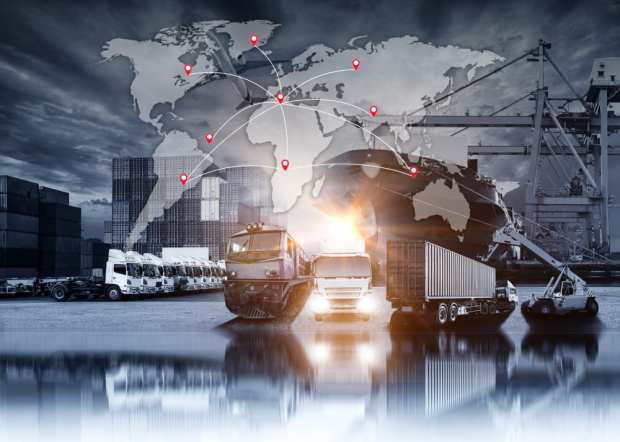Uncovering Supply Chains’ Deepest Risks With Data Innovation

Supply chain risk never sleeps, and as global expansion becomes a more viable option for growing enterprises, so does the prospect of heightened risk exposure. Global growth inevitably means working in unfamiliar territory, whether it be new geographic markets, business partners or otherwise.
The ongoing trade disputes between the U.S. and China, and between South Korea and Japan, have forced corporates to shift their supplier bases into new markets. Brexit is expected to have significant impacts on businesses’ global supply chains, too, analysts at Pinsent Masons warned last week. On top of geopolitical factors, there are a slew of risks facing supply chains from many angles, as Resilinc Co-founder Sumit Vakil recently told PYMNTS.
Complex regulatory demands, for instance, are a major headache, leaving supply chains at risk for noncompliance when operating with suppliers and business partners in new markets — often with unfamiliar compliance requirements. Cyberattacks are another threat, Vakil said, with businesses increasingly aware that, even if their own systems are protected, a data breach at a vendor can cause problems.
He also pointed to factory fires, among the most prominent and damaging events to harm a supply chain, as well as financial activity among a company’s suppliers. Expansion via merger and acquisition (M&A) activity, for example, means businesses change hands and new entities are created, and such changes inevitably cause disruption among their corporate client bases.
That’s only among businesses’ direct suppliers, Vakil warned.
“Between 5 [percent] and 15 percent of a company’s risk comes from these direct suppliers,” he said. “If you go a little deeper, into suppliers’ suppliers (Tier 2 and [Tier] 3 suppliers), then the risk increases.”
Take the compliance risk, for example. A business may be able to quickly address a product recall that occurs with one of its first vendors, but awareness of a product recall at a Tier 3 supplier might take much longer. Many of the risks that companies face not only stem from these vendors further down the supply chain, but often aren’t recognized by corporations struggling to obtain visibility and connectivity to those suppliers beyond the first tier.
That struggle to share information is among the largest barriers to supply chain risk mitigation, noted Vakil.
“There’s not even awareness of who these supplier are,” he said of those Tier 2 and Tier 3 supplier bases. “This lack of visibility into their multi-tier supply chains, this lack of awareness and understanding of how those [suppliers perform], and of business processes, are the major risks our clients face.”
Data Evolution
There has certainly been progress made in the data-sharing arena. Historically, supply chain professionals have had to manually aggregate data from their suppliers, and collect that information into spreadsheets for manual analysis. However, a lack of standardization would make this a major challenge: A single supplier might be asked by 30 different corporates to provide what is essentially the same information, presented in slightly different ways, Vakil explained. Furthermore, corporates onboarding their suppliers would often collect key information from them at the beginning, but that data would turn stale. Any efforts to press vendors to keep information up to date would often be considered intrusive.
Yet, Vakil noted that as awareness over the importance of supply chain risk mitigation grows, supply chains are more willing to embrace collaboration and communication — and the technologies that enable seamless, secure movement of data for risk analysis. This has been driven by the rise of Software-as-a-Service platforms, he said, but still presents one major hurdle: what to do with the information being collected.
Artificial intelligence (AI), machine learning and natural language processing (NLP) are the three technologies Vakil highlighted as having the most promise in positively disrupting this area of supply chain risk management. Not only can these tools analyze data, but they can learn from human behavior to suggest what actions need to be taken.
“Now, we’re getting to a point where computers are able to train AI systems to understand human cognition, and take action accordingly,” he explained.
Though this applies to the information shared between companies, certainly, he also noted that these technologies are beginning to allow for risk mitigation efforts to take a global, real-time view of current situations. Google’s open-source AI and NLP training solution BERT (Bidirectional Encoder Representations from Transformers), released last year, propelled NPL capabilities to a point where machines can aggregate data from text, including news stories and social media insights (like political trade negotiations or new product trends), and apply that analysis to the context of supply chain management.
While the term “cognitive technology” may be overused and hyped, Vakil noted that, in supply chain management, this potential stands to transform risk management.
“I really do feel that that is where supply chain is going next,” he said. “Taking all of these innovations in [NLP], all the understanding of how humans make decisions in the supply chain and bringing them all together into a really intelligent system that will help our supply chains get more robust, and more resilient to disruptions.”
